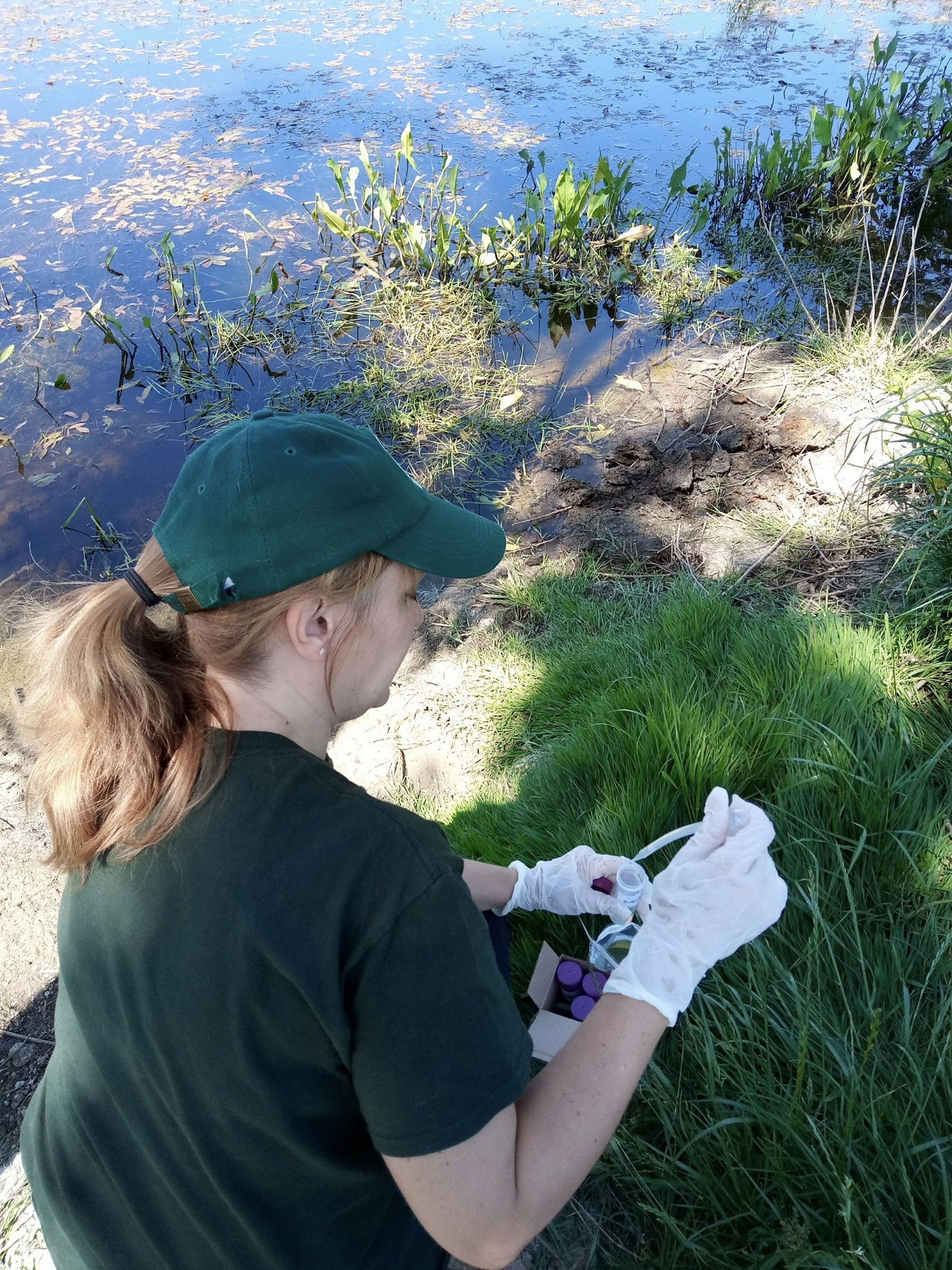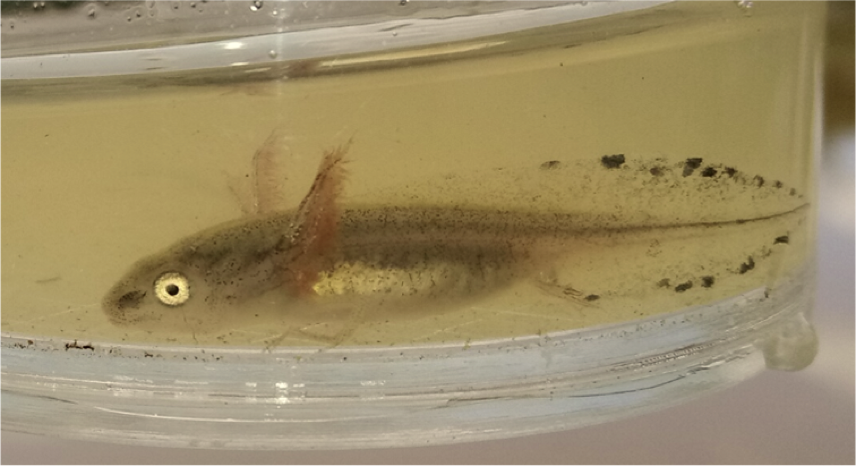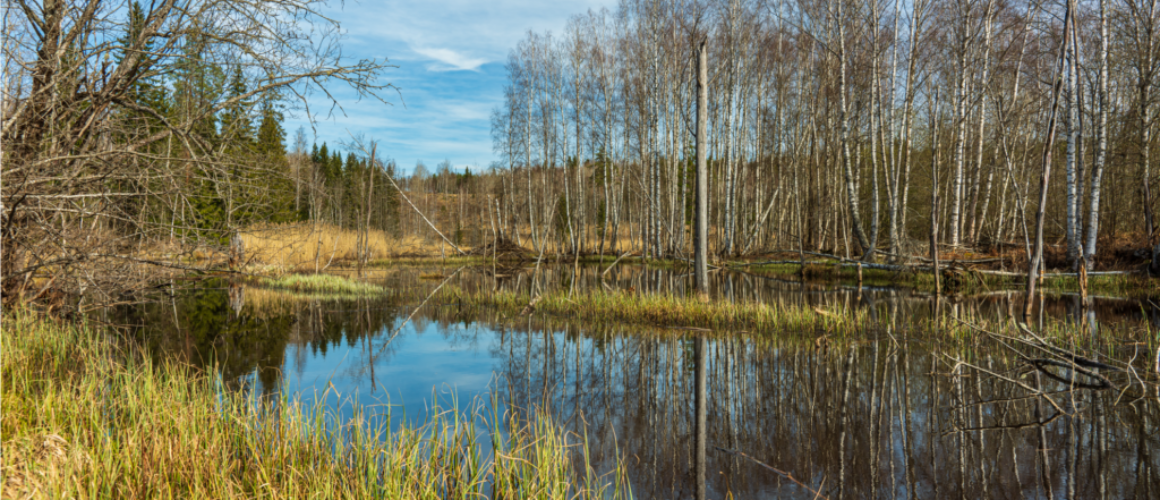District Level Licensing
The Cheshire Great Crested Newt Results Are In!
My name is Jen Almond and I work for Natural England. We are here to bring about nature’s recovery, and my role is to bring about better improved conservation outcomes for our largest native newt. As the District Level Licensing Programme Manager, I am responsible for rolling out a more strategic approach to licensing this European Protected Species, an approach called District Level Licensing (DLL).
This iconic species is almost black in colour, with spotted flanks and a striking, orange belly. Individuals can be identified by their bellies: their patterns of black spots are as unique as our fingerprints. As well as their distinctive crests, males have an extravagant courtship display to entice females. Under water, they arch their back and wave their tail around as if they are dancing!
Great crested newts are rare across Europe so we’re lucky in the UK to have internationally important numbers; however, they are sadly in decline due to changes in land use and habitat loss. Our nature recovery work at Natural England is about reversing that decline.
Under the traditional approach to licensing disturbance of great crested newts, developers who want to build on land where they are found must trap and relocate the species before starting work, simply keeping them out rather than helping to conserve their populations. The amount of money spent on survey, trapping and exclusion with plastic fencing can outstrip that spent on habitat creation and management by a massive 7:1. Seasonal restrictions can also lead to delays and create uncertainty over the costs and scheduling of planned development.
Conceived by Natural England, DLL offers an alternative approach to licensing whereby more habitat is created than lost to development (at a ratio of 4:1). Developers must pay for this new habitat based on the predicted impact of their development which covers the creation or restoration of ponds in areas modelled to make ‘more, bigger, better, more joined up’ great crested newt populations. New habitat is delivered by our experts on the ground like Cheshire Wildlife Trust and Cheshire East & Chester Council, and maintained and monitored for 25 years – all funded by the initial payment.
DLL is built upon a sound evidence base incorporating 7,518 new pond surveys and tens of thousands of existing records for the species. The approach utilises award-winning scientific modelling techniques to predict where great crested newts are, and where creating and restoring ponds will help support existing and link up local populations.

Under Natural England-led DLL schemes, 85% of developer money goes directly towards habitat creation/restoration, management and monitoring, compared to approximately 16% under traditional mitigation licensing. And that’s where our fantastic, hard-working and expert habitat delivery partners come in!
Cheshire Wildlife Trust and Cheshire East & Chester Council work tirelessly to engage landowners with the scheme, identify suitable locations for ponds, oversee the creation and restoration and then monitor and look after the ponds as they mature. Natural England are looking closely at the outcomes from our pioneering DLL schemes, using parameters in common for all schemes, those bespoke to each strategy area, and our first year monitoring data.
It is a great privilege to share the results from the first year of monitoring the ponds created or restored by our trusted partners for the Natural England-led DLL schemes. So far, Cheshire Wildlife Trust and Cheshire West and Chester Council have created or restored 109 ponds in Cheshire. eDNA surveys were conducted on 45 ponds in Cheshire this year (all those ponds that were created or restored by 30 November 2019). Our partners collected water samples, and these were analysed by CellMark. In Cheshire, 27% of ponds had been colonised by great crested newts after one year, an early but encouraging indication that this iconic species is finding and using their new summer homes!
As well as eDNA, a number of parameters are closely monitored, such as Habitat Suitability Index (HSI) indicators. These include pond area, shade and macrophyte cover. We are also looking at how pond age and pond type (restored or created) could influence colonisation by great crested newts. Although we don’t yet have a lot of data, we have found this year that colonisation was higher in restored ponds compared to newly created ponds (62% of restored ponds compared to 10% of created ponds were colonised by great crested newts). It is reasonable to expect that newly created ponds will take longer to mature and the marginal vegetation important for egg-laying to establish. As we collect more data our understanding of what’s important for helping to conserve great crested newts will grow and we can adapt what we do through the scheme in response.
Whilst a relatively small number of ponds have been monitored to date in Kent and Cheshire, the results are promising and add to our confidence that DLL can help improve the conservation status of great crested newts. We’ll continue to survey the ponds next year, each year for the first four years (and at regular intervals after that), to check they remain good breeding places for great crested newts. Watch this space!
About Natural England
- Natural England is the government’s advisor on the natural environment. Established in 2006, our work is focused on enhancing England’s wildlife and landscapes and maximising the benefits they bring to the public.
- Natural England’s general purpose is to:
“ensure that the natural environment is conserved, enhanced and managed for the benefit of present and future generations, thereby contributing to sustainable development.”



